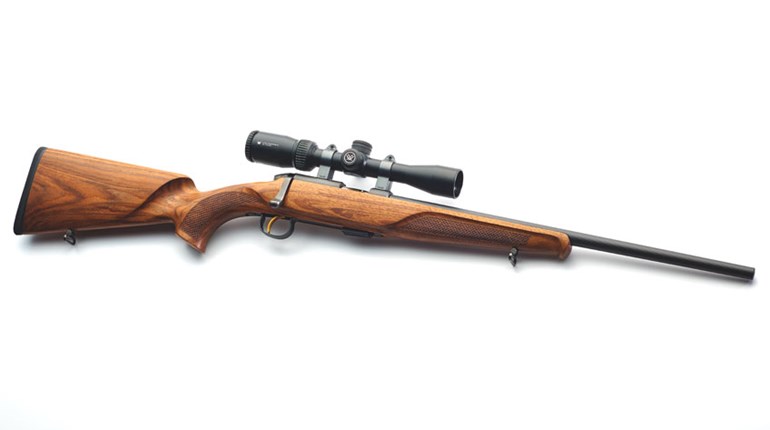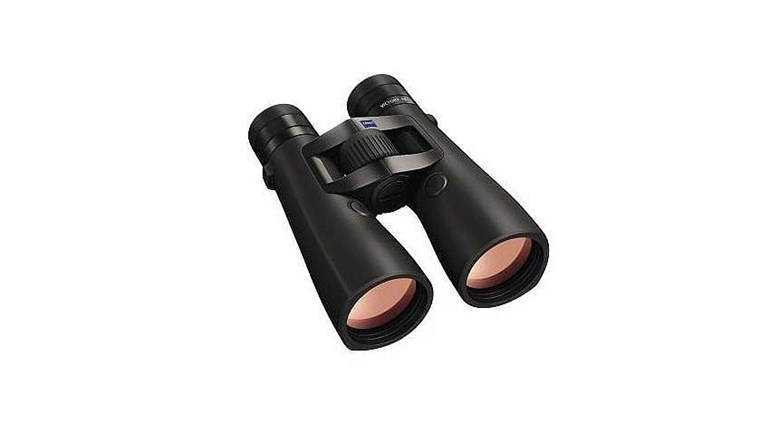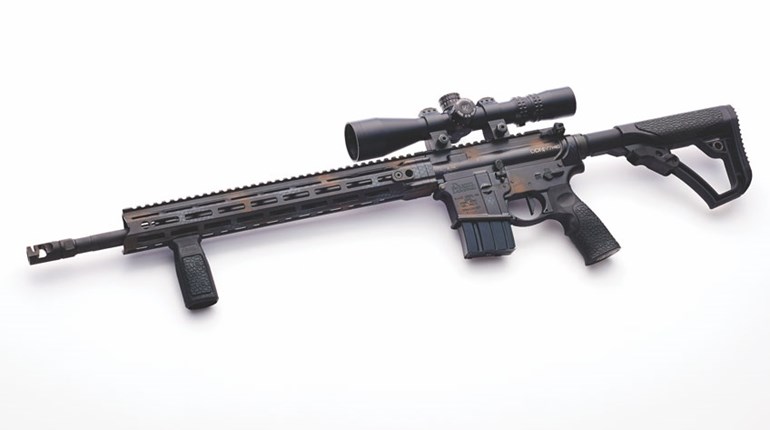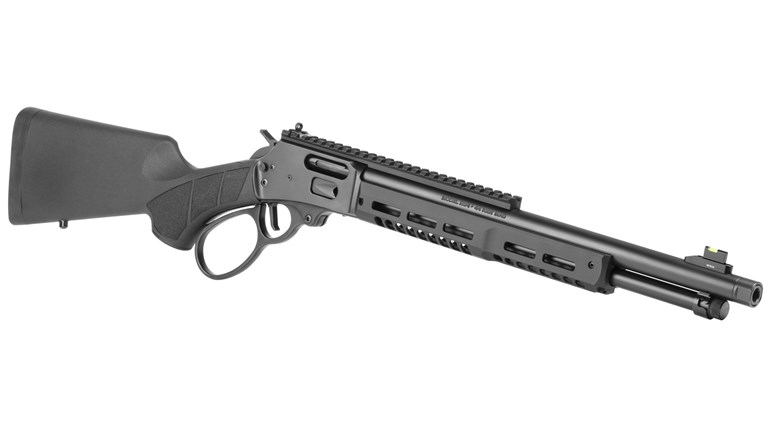
We reckon there are precious few discussions of glass in almost any context that won’t eventually include Carl Zeiss. The company’s 170th anniversary is right around the corner (Nov. 17), after all, so this should not surprise.
Carl Zeiss camera lenses, planetarium projectors and microscopes (the original claim to fame) are all of legendary excellence, and are perhaps reason enough that nearly any shooter should listen up: Those same optics can bedeck your rifles. Certainly our experience with the Victory V8 1-8x30 riflescope advances such a proposition with an urgency that we did not quite expect.
And our expectations were high.
In physical terms, we’d suggest the Victory is not, well, domineering? It is understated in many ways—no mile-high turrets, no remotely garish labels, in fact little color at all except for that elegant, telltale blue pennant on a matte black finish. It still manages to shine just a little, yet there is an arresting something about the Victory.
When it hits you what that something is, it hits hard, as in, “Holy cow, that’s a big tube.” Yes, it is—36 mm to be precise—and thus the fall begins: into modest penury (it is a Zeiss, after all), into growing amazement and, yes, into an optics sort of “love.”
Between the objectivity (no, that is not a lens joke) of that first realization and the onset of the last sensation—and yes, we are slightly ashamed—the V8 is rapidly revealed as a pragmatic, deeply useful beauty. But get it on a rifle, and the “oooooo”s and “aaaaaaah”s really get out of hand.
First: Inside that huge tube is a set of Schott glass/fluoride lenses that transmit 92 percent of the incoming light. You’ll stop wondering why so many other manufacturers bury (or never reveal) these numbers when you take a peep through the Victory. In terms of adjustment, our click count puts it close to an outstanding 100 minutes (though the Zeiss website has it at 100 “clicks”). We’ll vouch for “large,” either way.

Next, you’ll notice a fantastically forgiving eye box. While every scope has an optimum range at which the tube walls seem to “go away” (and the Zeiss does too), you won’t believe how close you don’t have to come to this ideal distance/head position when you throw that rifle and optic up in a hurry. A quick shot can stay quick, in other words—no hunting for the reticle whether you’re 3-gunning or dangerous game hunting. (Remember, this is a function of a proper mount position, but if you get it right, you’ll know.)
Third is all that Zeiss clarity. By the time you get the diopter adjusted, we’ll wager your prescription eyeglasses aren’t as clear. Our brille, for instance, fail this comparison badly, and they’re pricey and brand new. Grrrrrrr.
Our sample had a second focal plane, illuminated “Reticle 60,” and here we got sucked into another tight turn. We know the complex reticles have their purposes, but you’re unlikely to miss them as much as you think. The ’60 reminds us of a skinny German #4 with the added benefit of a small illuminated center. And we mean small: The dot subtends less than an eighth of an inch at 100 yards, yet we found it “lose-proof,” never hunting for it or losing it in recoil on a single shot, and never wishing it bigger or brighter, either. It handled difficult sun angles with ease, too, including nearly-straight-into.
Controls are another huge strength on the V8. Diopter adjustment was both jostle- and wrestle-free. It has no locking ring to get over-locked either, which we prefer for two reasons. First, our vision is slightly different from day to day, even hour to hour, and fine-tuning is a frequent necessity. Second, if you tighten a locking ring at 20 degrees, you may find it immovable at 60—survivable, surely, but aggravating.

Magnification zooming was superior, too, with neither handedness favored, nor requiring excessive throw—1 to 8 powers are all available in what feels like just short of 180 degrees of rotation.
That dot we raved about is just about foul-up-proof too in terms of controls. A dally-free “touch on/hold off” switch is at top/center of the eyepiece, centered in a continuous brightness and glove-friendly rotary dial (clockwise is always brighter and vice versa). Battery life, too, is game-changed, if we may say. A sensor shuts off the illumination a few seconds after the rifle—any rifle (well, ok, the three we tried)—is set down, and re-illuminates when you pick it up. We took this as a challenge, but have yet to find a way to fool it. Nifty.
Somewhat against our experience and inclination, we’d add particular kudos on the elevation and windage adjustments—the 1/3-MOA increments and easily distinguishable clicks are our new favorite, though perhaps others won’t agree. We found them as usefully precise as the magnification requires, yet with a dramatically smaller propensity to lose our count when adjustments were in multiple minutes. As we’ve already observed, the knobs/caps are close to the scope body, and therefore a reduced collision hazard on other gear. Taller adjustments have their functions, but given the chance, we’re glad to forego their weight and bulk. (The nice folks at Kenton Industries can fix you up bigger adjustment knobs if you like, though.)
Our last observation has the disadvantage of feeling (very) subjective, but we broach it all the same since it might strike as important a chord for you as it did for us. Over and over again, we found ourselves shooting—and easily hitting—at consequential ranges while having forgotten the scope was at 1x. Chalk this up to any of the above or a combination thereof, but it’s a new one for us. Whatever the formula, the conclusion is inescapable: These guys are good.
We’ve no legitimate cause for surprise now that we get to the end. As noted, Zeiss has been at it a good long time. But built into that heritage may be the biggest trap of all for long-laboring organizations—that of inertia. Suffice it to say we found no tiny shred of such arrogance in the Victory 1-8x. The technology is great—even fabulous—where it needs to be, but never at the expense of readily discernible craftsmanship and inherent quality.
Visit Carl Zeiss sport optics at www.zeiss.com. MSRP on the Victory V8 1-8x is $2,599.
































